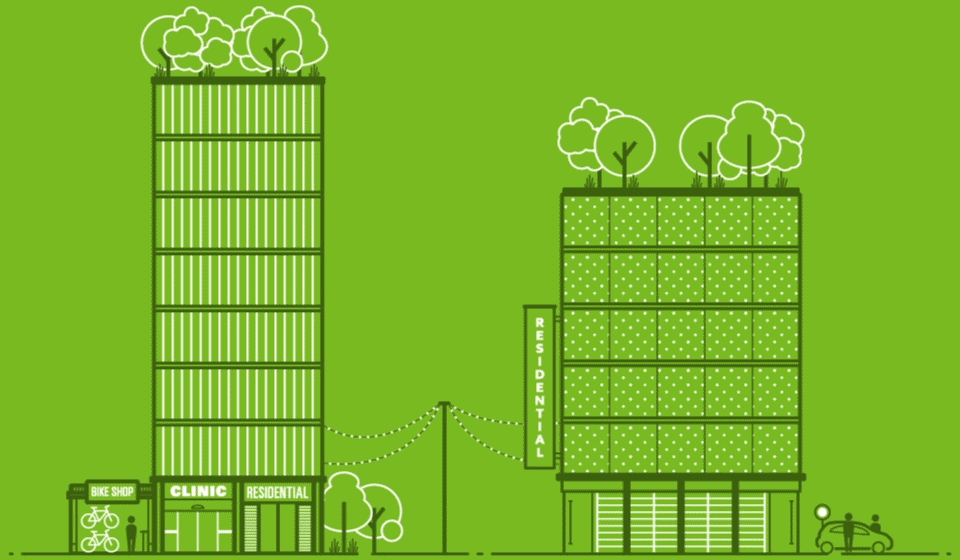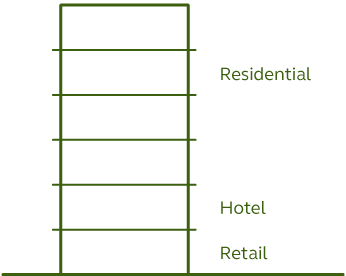URBAN MIGRATION
Outdated zoning codes and rapid population growth are forcing U.S. cities to face difficult questions about how to augment and reposition their existing housing stock. The shortage of desirable—and affordable—residential space is having ripple effects across our economy and our culture.
As the cost of living and housing prices increase in urban areas, wage and GDP growth remain slow, and student debt continues to rise, becoming a homeowner can feel like a pipe dream. As rental prices in major cities increase, second-tier cities like Nashville, Austin and Charlotte are drawing 20- and 30-somethings who want an urban, walkable, amenity-filled lifestyle without the painful price tag.
URBAN DESIGN STRATEGIES
Architects have come up with a range of creative residential design solutions, particularly in areas where increased density can help accommodate a growing population.
STACK ‘EM UP
Developers and tenants are turning to “stacks”—or buildings with multiple uses—to get the biggest bang for their buck in urban cores. Stacks offer countless combinations and the benefits of a mixed-use development within a single building. Along with increased convenience for tenants, stacks also offer a level of built-in economic resiliency thanks to spaces that are inherently more flexible and can be retrofitted to align with market demands.
NEW PRIORITIES
From hit movies, best-selling books, binge-worthy TV shows and even everyday vocabulary, the concept of minimalism has infiltrated pop culture and taken an interesting turn when it comes to housing; despite some skepticism, micro-units have become trendy for urbanites of all ages. Luckily, today’s multi-purpose furniture goes way beyond the standard Murphy bed to make micro-units livable and even luxurious: work desks that transform into dining tables for six and ottomans that double as side tables, for example. On the horizon: pre-fabricated units capable of transitioning into different configurations, turning a bedroom into an office, dining or living room, and endowing a studio with the functionality of a two-bedroom apartment.
PRE-FABULOUS
Delivering the dual benefit of minimizing cost and shortening construction timelines, pre-fabricated housing eases the path from design to reality and can serve as a creative solution for urban infill projects. Modular units are fabricated off site, reducing the time needed for construction and financing, and can be used as single units or combined to create a multi-story building. From a sustainability standpoint, pre-fab construction produces less waste and quality control ensures better energy efficiency.
Coming up Next: Cultural Influences





